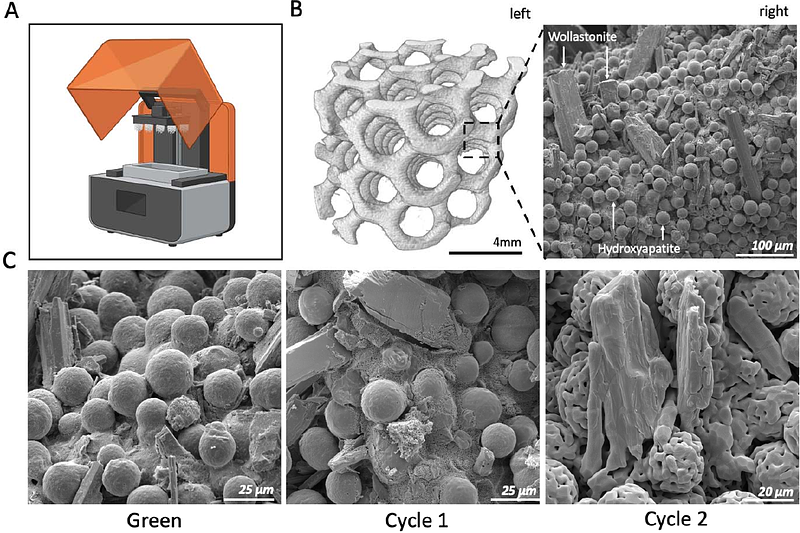Sintering 3D-Printed Hydroxyapatite-Wollastonite Lattices Improve Bioactivity and Mechanical Integrity for Bone Composite Scaffolds

Sintering 3D-Printed Hydroxyapatite-Wollastonite Lattices Improve Bioactivity and Mechanical Integrity for Bone Composite Scaffolds
Bertone, P. M.; Olevsky, L. M.; Kathir, K. L.; Agnew, S. A.; Scheideler, W. J.; Hixon, K. R.
AbstractThe advancement of bone tissue engineering relies on the development of scaffolds that combine structural integrity with bioactivity. This study introduces a novel composite scaffold integrating three-dimensional (3D) printed hydroxyapatite (HA)-wollastonite (WOL) gyroid lattices with chitosan-gelatin cryogels, designed to fulfill these dual requirements. The HA-WOL lattices were fabricated using digital light processing (DLP) 3D-printing and subjected to optimized thermal treatment cycles demonstrating statistically superior compressive modulus and ultimate strength. This thermal process facilitated the phase transformation of HA-WOL to bioactive {beta}-tricalcium phosphate ({beta}-TCP) and silicocarnotite mixed phases, with MG63 (osteoblast-like) cell culture revealing significantly enhanced viability and biocompatibility. The chitosan-gelatin polymer network was successfully incorporated into the lattice, resulting in a composite scaffold with retained relative swelling capacity, improved mechanical stability, and superior bioactivity compared to cryogel-only constructs. Additional MG63 cell culture studies revealed that the composite scaffold supported cell viability and proliferation into the constructs, demonstrating its potential to conduct tissue regeneration across bone defects. This work highlights the synergistic effects of integrating bioactive ceramics with polymer-based cryogels, offering a promising solution to address bone regeneration in orthopaedic reconstruction. Future research will focus on in vivo validation and optimization of scaffold architecture to further enhance clinical relevance. This study paves the way for next-generation composite scaffolds capable of bridging the gap between mechanical integrity and biological performance in bone regeneration.